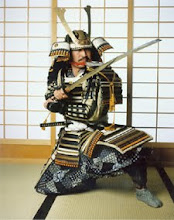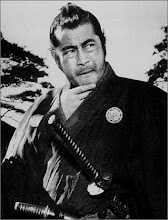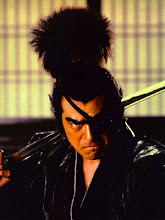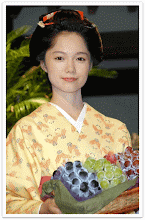When most people in America think of Kimono, one
conjures up romantic images of Geisha and Samurai films from an era long past.
But what many people outside of Japan may not know is that Kimono is still fashionable
in this modern era and you can find Kimono right here in Los Angeles. So when
we were initially inspired to write an article on Kimono in LA after seeing the
gorgeous displays at the Japan Foundation on Wilshire Blvd, we sought to learn
directly from the very people who made these displays possible. To do that we
contacted the Suehiro Kimono Agency and were we in for a treat!
Hidden away in an unassuming North Hollywood
neighborhood is one of Hollywood’s best kept secrets. If you have a production
be it film, theater, or commercial, or simply the need to rent an authentic
kimono for a special occasion with full dressing and not look like you’re
wearing some tourist robe you found at a gift shop, then this is the place to
be. Founded in 2010 by Kimono Master & Designer Ms. Sueko Oshimoto and her
partner Mr. Kentaro Terauchi, the Kimono Agency (as it is known for short)
welcomes all who seek to learn about Kimono and the wide array of services they
provide. So when we sat down with Kentaro and Ms. Oshimoto in their studio, we
asked them to tell us about their business and what we can learn from them.
AM: Our first
curious question goes to Mr. Terauchi: What inspired you to go into the Kimono business
in a country not known for Kimono?
KT: (Big
Smiles) I started when I met Sueko when she first graduated Kimono Dressing
School. I helped her as an event coordinator. So I met her and saw these beautiful
ladies in the ceremony I thought this would be a good business in the United
States because American people love beautiful stuff so I decided to join her
business.
AM: On a philosophical level, what would you say
Kimono means to you:
KT: Kimono it has become my life. I found this to be
so beautiful; I wanted to introduce this to everybody.
SO: Kimono means everything to me because I grew up
with Kimono in Japan. I went on to get a license and then onto teaching Kimono
& culture. So for me, it is everything.
AM: Have you found it difficult to continue Old
Kimono traditions with the changing times?
SO: Hmm, it is different right now with the
generations changing. In my mother’s time they wore Kimono every day. In my family
we grew up wearing Kimono for ceremonies such as Obon, Sichi-Go-San, New Years Oshugatsu,
and celebrating twenty years to turn to adulthood Seijinshiki but it is different today.
AM: So could you tell a little about the services
you provide?
KT: We provide Kimono Costume Design for film,
television, theater, private parties, as well as red carpet events. Sueko is a
costume designer who does fashion styling for fashion magazines for Italy,
Germany, and Japan. We also do photography for Japanese Special Occasion,
Japanese Wedding, for Japanese and American people too.
SO: We also do Kimono dressing which people do come
to us because the Obi requires a special technique so we have a lot of
knowledge for this.
AM: Do you also get involved with hairstyle or say
Edo Period Wigs?
SO: Oh yes we do. For example, this coming April we
are doing an Edo Period Stage Play “Burai – Standing All Alone,” so we are
making what the play needs for the Edo Period. We have studied many different
Kimono styles for the different periods such as the Edo Period, Meiji Period,
Heisei and so on.
AM: What would you say is your favorite historical
period for Kimono?
SO: I would say Edo Period. I like it especially the
women’s clothes but these days there are more different styles which I like
too. All the Shokunin (Artisans) or
designers who drew the Kimono designs on the material are different. I love it
and now the new styles are more modern styles. Same pictures but different
because it is for different people, different generation.
AM: Where does most of your Kimono come from?
SO: From Japan, particularly Kyoto, Kumamoto, &
Tokyo. Kimono today is not so worn by the newer generation because it is
expensive. You know everything is expensive.
AM: What could you tell us about your Kimono
Dressing School?
SO: I teach people how to wear Kimono. You see when
one wears Kimono it’s like a scale of one through ten because there are many
ways to wear Kimono. There are age differences, formal Kimono, and little
details we change. For newer generations we teach them traditional Japanese
Kimono. How to wear Kimono in the traditional way and then they wear and
eventually get a teaching degree which means they get the license from Japan.
AM: So essentially a person could learn from you and
take an exam and get a teaching degree without having to go to Japan?
SO: Yes. We call the Master in Japan and they fly
out to administer the final exam. If they pass the final exam they can get the
license.
KT: Also, she is the only person who can give out
the National Certification to somebody here in the United States.
AM: We curious to ask you about the Kimono styles
based on age groups. We noticed that children’s Kimono become more colorful as
they get older up to age 20 and then they become more subdued with age.
SO: Yes it is a traditional style change little by
little with each year.
AM: Kind of like a colorful flower that blooms then
slowly fades?
SO: Yes.
AM: Earlier, Mr. Terauchi mentioned rentals for
special occasions. For example, this year our child will be doing her first Sichi-Go-San. As first time parents
looking to rent a Kimono for such an occasion, what do you offer?
SO: For each parent it is different. If they come to
us, we do the hair up, we put on the Kimono of the parents choosing. The girls
celebrate at ages 3 and 7. The boys celebrate age 5.
AM: And for Men’s Kimono?
SO: Kentaro helps me and he also wears Kimono. With
the new generations changing we do carry traditional and modern styles. We also
have styles as seen from period movies.
AM: So what recent films or commercials can we see
your Kimono in?
KT: We did one commercial for Fuji Natural Foods
that is aired on Telemundo Channel 52 which features a modern styled Kimono.
SO: We also did one for Taco Bell as well as a UTB
promo for the play we are sponsoring “Burai – Standing All Alone” which
features traditional Kimono.
SO: We make many different styles but we do what our
clients ask us to do so if they don’t want traditional styles we make them
modern styles.
AM: Can you name some of your more prominent past or
current clients?
SO: Miranda Kerr for a Japanese commercial, George
Takei, Jon Perry, and Susan Hirasuna.
{Seen here is George Takei with Ms. Oshimoto & Kentaro Terauchi}
AM: Do you see a growing interest in Kimono outside of Japan?
SO: It’s interesting. We work with lots of
photographers and people who are not looking for traditional Kimono but like to
use traditional Kimono in different ways. In Japan right now they celebrate girls
20 years and weddings. Some of the people wear traditional Kimono but some of
the people wear Kimono untraditionally. It’s more like a modern style. I don’t
know right now with new generations styles changing. For me, if you don’t wear
any kind of Kimono then forget it. It doesn’t matter if you are modern style or
traditional style, the need to wear is more important. As they get older they
wear more traditional style. So I think in Japan people are not wearing as much
because it is so expensive but everybody is different old and now.
AM: For our last question we would like to ask how
do you see or could you see Kimono as a connection to Japan’s rich cultural
history?
SO: Culture as you know, you have to have it because
this is our culture going from generation to generation. We still take history
and learn about it be it movie or Jidaigeki
Drama. We still do that and people know that but generations are changing and
they forgot about it. But when they get old they return back to old culture.
But Oiran (courtesan – prostitute
style), Geisha, also the Hanayome (bride) they all look the same
almost but big difference. The Oiran always wear the colorful Kimono because
they are prostitutes from a long time ago with the big Obi tied in the front.
Now in Japan people want to wear the Oiran
Kimono because they don’t know what it means. They are drawn to the elaborate
look and see it looks beautiful so they like to wear it. Even the girl
celebrating the 20 year celebration want to wear the Oiran but Oiran is Oiran (shakes head)! You can’t wear that
for a wedding yet people want it.
AM: Any last thing you would like our readers to
know?
 KT: We like to show you beautiful Kimono that nobody
wears in Japan these days due to cost that is why we make modern costume which
foreign people like to wear.
KT: We like to show you beautiful Kimono that nobody
wears in Japan these days due to cost that is why we make modern costume which
foreign people like to wear.
SO: We like to make easy to wear because our
traditional wear we have to help you with the under garments then the outer
sash then all the different layers. The modern style allows more flexibility. So
if you do not have all the traditional items you cannot wear that style of
Kimono. If you just want to wear it on top and tie it off, it’s ok. That is
modern style like a robe. So that’s why we make an easier way to wear Kimono which
is a more traditional but easier.
AM: Domo Arigatou’ Gozaimasu!
Every month you can see one of their Kimono on
display at the Japan Foundation on Wilshire. You can also visit their blog on
their company website to see the latest Kimono displays.
For all your Kimono inquiries, questions, rentals, or services. Please visit the Suehiro Kimono Agency - You'll be happy you did!



























